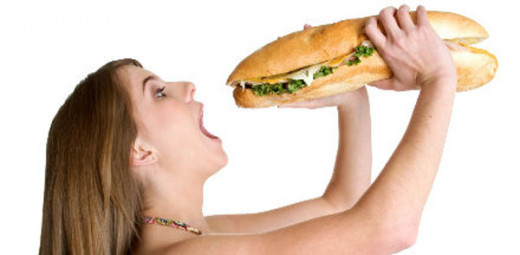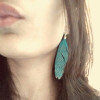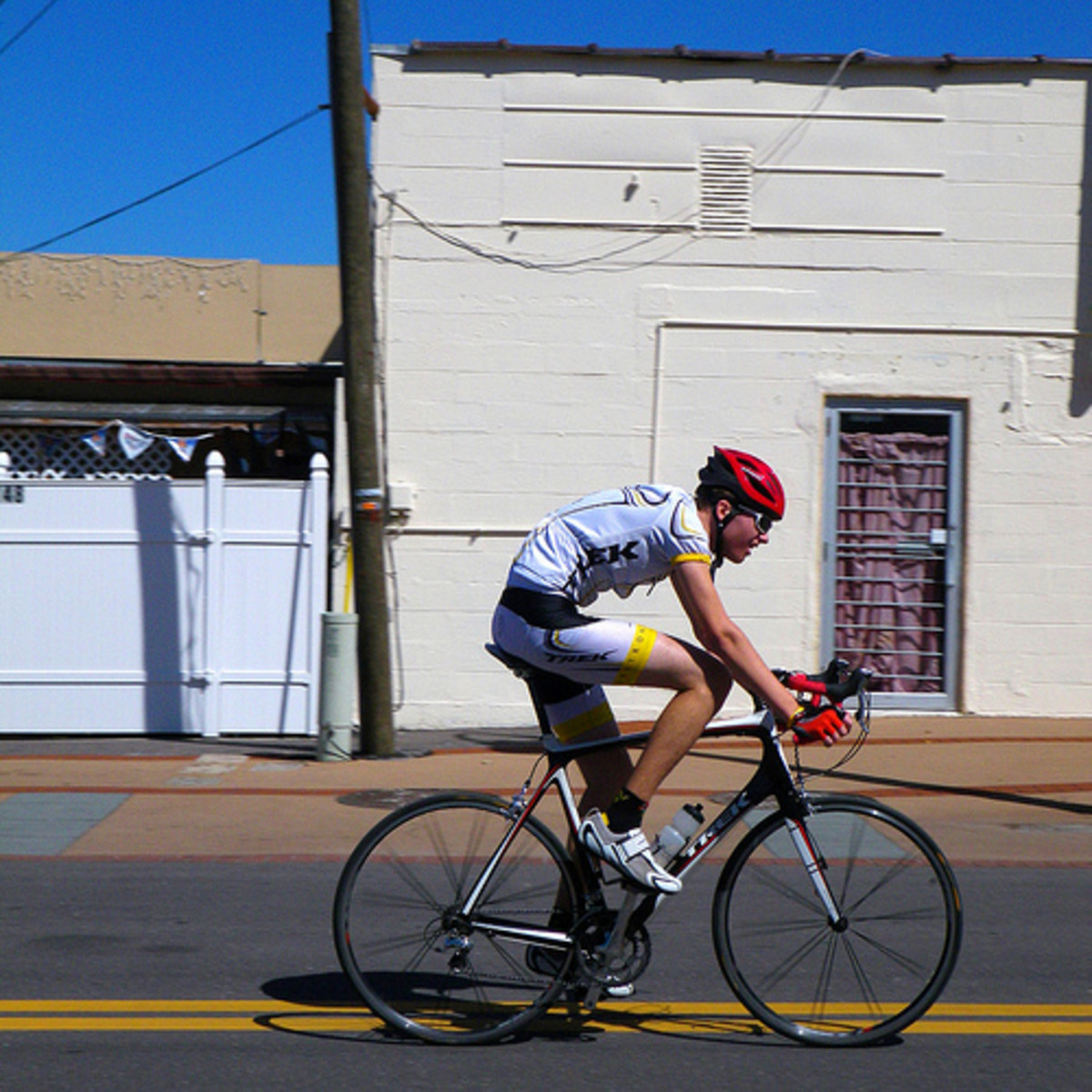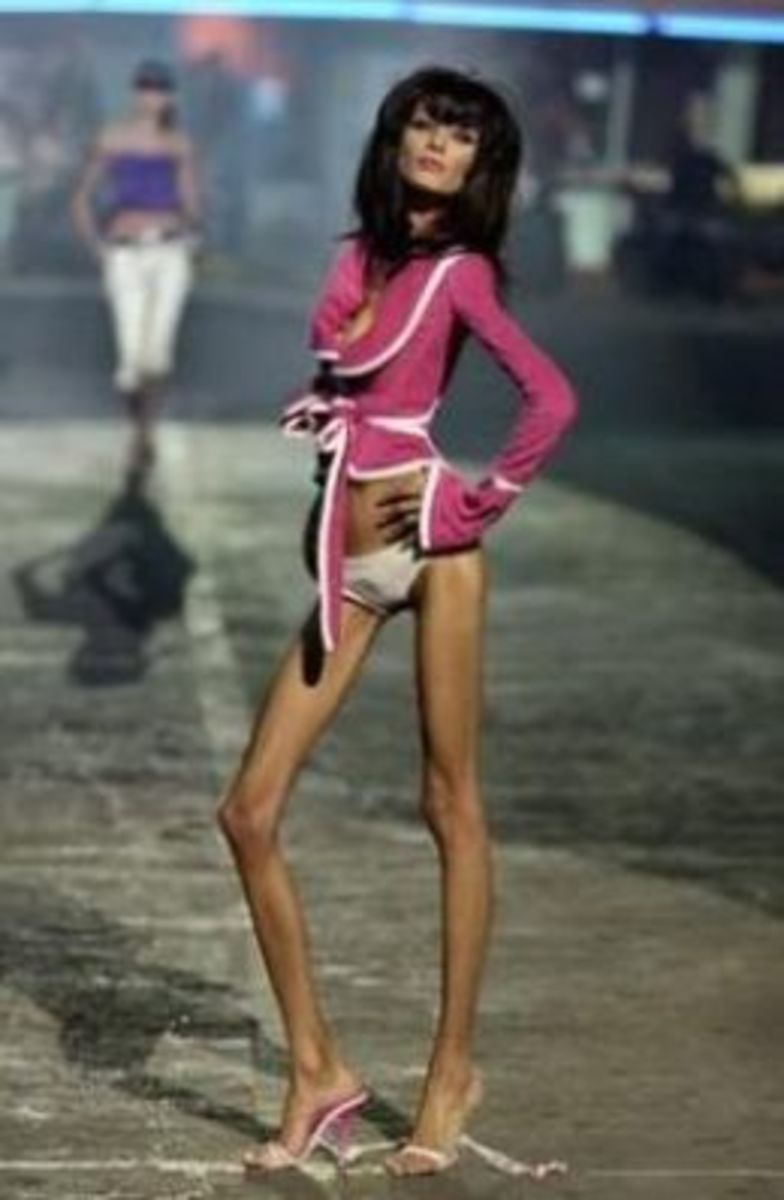- HubPages»
- Health»
- Mental Health»
- Eating Disorders & Mental Health
Overview : Bulimia Nervosa


Bulimia Nervosa
INTRODUCTION
MENTAL DISORDER :
- Mental disorder is a group of emotional , cognitive and behavioral symptoms that causes distress or disability .
EATING DISORDER :
- Eating disorders are characterized by severe disturbance in eating behavior .
- At the heart of eating disorder is an intense fear of becoming overweight and fat , and accompanying pursuit of thinness that is relentless and sometimes deadly .
TYPES OF EATING DISORDERS :
Within the DSM there are 2 separate types of adult eating disorders :
- Bulimia Nervosa
- Anorexia Nervosa
BULIMIA NERVOSA
MEANING :
- The term ' Bulimia ' comes from the Greek words , ' bous ' and ' limos ' , where ' bous ' means ' ox ' and ' limos ' means ' hunger ' , together it denote a hunger of such proportions that the person ' could eat an ox ' .
- It is characterized by binge eating and by efforts to prevent weight gain using inappropriate behaviors such as self - induced vomiting and excessive exercise .
HISTORY :
- Bulimia Nervosa was recognized as a psychiatric syndrome relatively recently .
- The British Psychiatric G.F.M. Russell , proposed the term in 1979, and it was adopted into the DSM in 1987 .
DSM - IV - TR :
- Recurrent episodes of binge eating . Binges involve eating , in a fixed period of time , amounts of food that are far greater than anyone might eat under normal circumstances . For example , A person might eat a gallon of ice - cream , a family - sized package of Oreo cookies , and a whole chocolate cake during a single short binge . While the binge is occurring , there is also a complete lack of control over eating and the person is unable to stop .
- Recurrent and inappropriate efforts to compensate for the effects of binge eating . Typical strategies include self - induced vomiting , use of laxatives , or excessive exercise . Some patients even take thyroid medication to enhance their metabolic rate .
- Self - evaluation is excessively influenced by weight and body shape .
DIFFERENCE ( Between Binge - Eating / Purging Type Of Anorexia Nervosa And Bulimia Nervosa ) :
- The clinical picture of the binge - eating / purging type of anorexia has much in common with bulimia nervosa . Indeed some researchers have argued that the bulimic type of anorexia nervosa should really be considered other form of bulimia .The difference between a person with bulimia nervosa and a person with the binge - eating / purging type of anorexia nervosa is weight . By definition , the person with anorexia nervosa is severely underweight . This is not true of the person with bulimia nervosa . Consequently , if a person who binges or purges also meets for anorexia nervosa , the diagnosis is anorexia nervosa and not bulimia nervosa .
- It is important to understand that people with anorexia nevosa and bulimia nervosa share a common and overwhelming fear of becoming fat . However , unlike patients with anorexia nervosa , bulimic patients are typically of normal weight . Sometimes they may even be sightly overweight . The fear of becoming fat helps explain the development of bulimia nervosa .
PROCESS :
- Bulimia typically begins with restricted eating motivated by the desire to be slender . during these early stages , the person diets and eat low - calorie foods . Over time , however , the early resolve to restrict gradually erodes and the person starts to eat ' forbidden foods ' . These typically , include snack and dessert food such as potato chips , pizza , cake , ice - cream and chocolate . However some patients binge on whatever food they have available , including such things as raw cookie dough . During an average binge , someone with bulimia nervosa may consume as many as 4,800 calories . After the binge , in an efforts to manage the breakdown of self control , the person begins to vomit , fast , exercise excessively , or abuse laxatives . This pattern then persists because , even though bulimic individuals are disgusted by their behavior , the purging serves to alleviate the extreme fear of gaining weight that comes from eating .
CHARACTERISTICS :
- Bulimia is a costly disorder for many patients . High food bills can create financial difficulties , and patients sometimes resort to stealing food from housemates .
- The typical patient with anorexia nervosa often denies the seriousness of her / his disorder and may remain seemingly unaware of the shock and concern with others view her / his emaciated condition . In contrast , the mind - set of the average bulimia nervosa patient is anything but complacent . Preoccupied with guilt , shame , self - deprecation and efforts at concealment , she struggles painfully and often unsuccessfully to master the frequent impulse to binge .
TYPES :
The DSM distinguishes between :
- Purging Type Of Bulimia Nervosa
- Non - Purging Type Of Bulimia Nervosa
PURGING TYPE :
- In purging type of bulimia nervosa , the person has employed purgative methods of preventing weight gain .
- Methods like vomiting , use of laxatives etc .
- The purging type is by far the most common and accounts for about 80 percent of cases .
NON - PURGING TYPE :
- In the non - purging type , the person may fast or exercise but does not vomit or use laxatives or diuretics to counteract the effects of binging .
CASE STUDY :
- The late princess Diana of the United Kingdom also developed an eating disorder . It began at age 20 , virtually from the outset of her difficult and unhappy marriage to prince Charles , who had made critical remarks about her weight during their engagement and who , over time , increasingly distanced himself from her . Diana's binging and self - induced vomiting continued , with variations in intensity , at least until the couple formally separated . Like many who adopt an eating disordered lifestyle , the princess was able to contain or ignore speculation about her problems under she decide to make them public , some years before her death in a car accident in 1997 . Diana's type of eating disorder is called ' Bulimia Nervosa ' .
HAPPY LEARNING....









